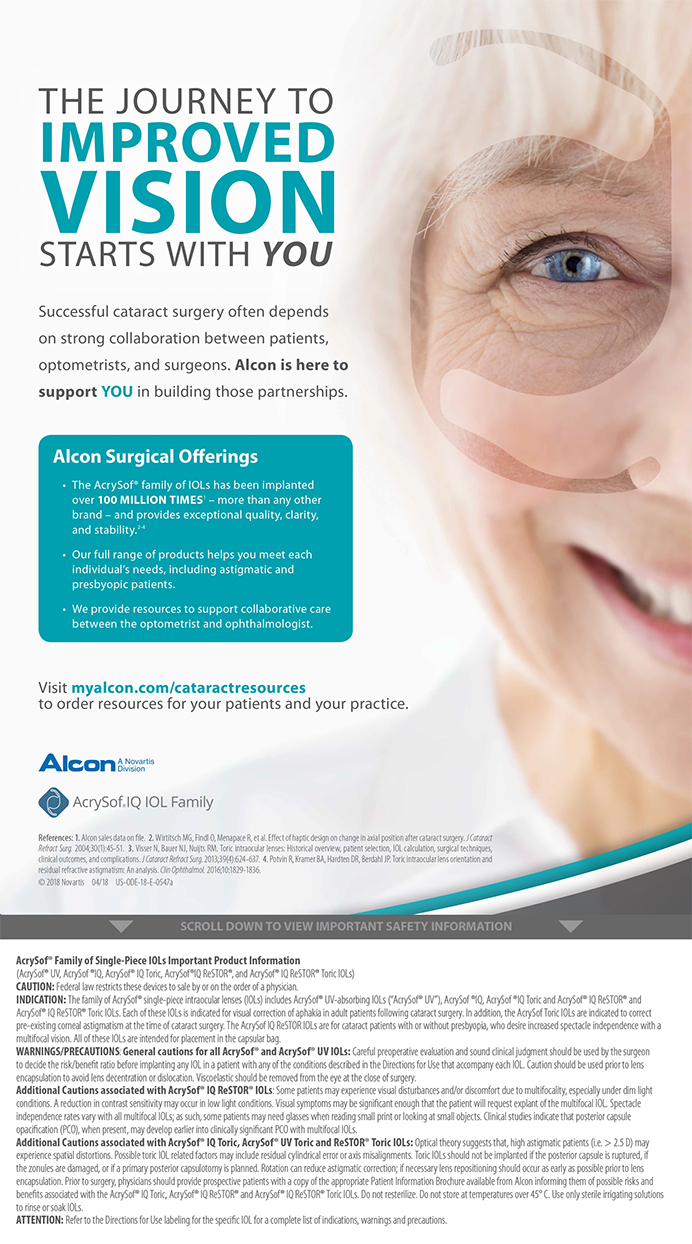The lure of new technology and gadgets is strong, and it is tempting to believe that buying the latest and greatest equipment is the key to providing patients the best care possible. As businesspeople, however, optometrists are also tasked with doing what is best for their practices from a financial standpoint. ODs seeking to balance their professional and business obligations may wish to weigh several factors before purchasing that great new device.
WHAT ARE YOU IMPROVING?
It important to weigh three major factors when considering a large business investment: cash flow, efficiency, and patient care. For questions you should ask yourself on these topics, we turn to Mick Kling, OD, of the leadership training and consulting firm Impact Leadership, for guidance. He said that before you buy, you should ask yourself three questions:
- Will this new technology improve the cash flow of the practice?
- Will it influence the efficiency of the practice?
- Will it improve quality of patient care?
Cash Flow
To determine whether a new technology will improve the cash flow of the practice, estimate the frequency with which you will use the new technology, and consider the upfront cost. Borrowing money rather than paying cash to purchase equipment means it will be more difficult to improve cash flow. The best technology in the world won’t benefit you, your practice, or your patients if it puts your clinic out of business.
Efficiency
How will the new technology influence your practice efficiency? One of the greatest things about a new technology is that it can allow us to do or see more with less effort. Any investment in a new technology should help improve your patient flow and facilitate faster and more accurate diagnoses. If a technology does not make you more efficient—or worse, if it makes you less efficient—then it is probably not right for your practice.
Patient Care
Among the most important considerations when purchasing new technology is how it will affect quality of care. Dr. Kling suggested that doctors should weigh the cost of purchase against the potential for a new technology to improve the care that they deliver. We are in the business of taking care of people. Any investment in a new technology should improve our ability to provide exceptional care to our patients. Often, however, we place too much emphasis on this criterion for making purchasing decisions without considering the other two factors: whether the investment will make us more efficient or improve our cash flow.
THE OPTOMETRIC COMMUNITY
Optometric service networks of independent private practice owners (eg, Vision Source) provide ODs with trusted networks with which to share experiences and best practices. The strength and wisdom of these networks and their members can be tapped when a clinician is considering new equipment Ask your colleagues in these networks if they have the piece of equipment or technology in question, how often it is used in practice, how it affects cash flow, and whether patient care has been significantly improved.
Larger networks can negotiate lower purchase prices on behalf of their members. If you’re not affiliated with a network, alliance, or buying group, find a trusted colleague or two, and you can negotiate together.
NEGOTIATION
Always negotiate the price of equipment plus add-on costs. Add-on costs include service agreements, equipment tables, and disposable pieces such as probes for the Icare tonometer (Icare USA) and activators for some vectored thermal pulsation platforms, (eg, LipiFlow, [Johnson & Johnson Vision]). Disposables costs add up quickly, and it’s best to ask detailed questions during the negotiation stage.
TRAINING
Understanding the onboarding process with new equipment is key to a successful purchase. Ensure that the company is committed to your success and that of your staff. This means providing adequate training, support, and suggestions on how to use your new equipment more efficiently. Arrange to have a trainer on site when first using the equipment on patients so that all team members are comfortable. Also, be sure to get trained in basic troubleshooting for when issues with the equipment arise.
TO BORROW OR NOT TO BORROW?
When making equipment purchases, it is easy to fall into the trap of only considering the monthly payment of low-interest loans and leases when estimating affordability. What often gets lost is that we are adding crushing debt to our balance sheet, which can add enormous strain on the cash flow of the practice. Paying cash for equipment will always be healthier for your practice (Table).

Table. Purchasing new equipment with cash yields much higher net income compared with borrowing money to purchase equipment. Even at the low interest rates illustrated in this example, net income for items purchased with borrowed money was more than 80% lower than net income generated from items purchased with cash.
IS IT WORTH IT?
Investing in your practice means making informed, researched decisions. Remember that we are in the business of health care, and taking financial care of our practice ensures that we can provide the best treatments for our patients.






